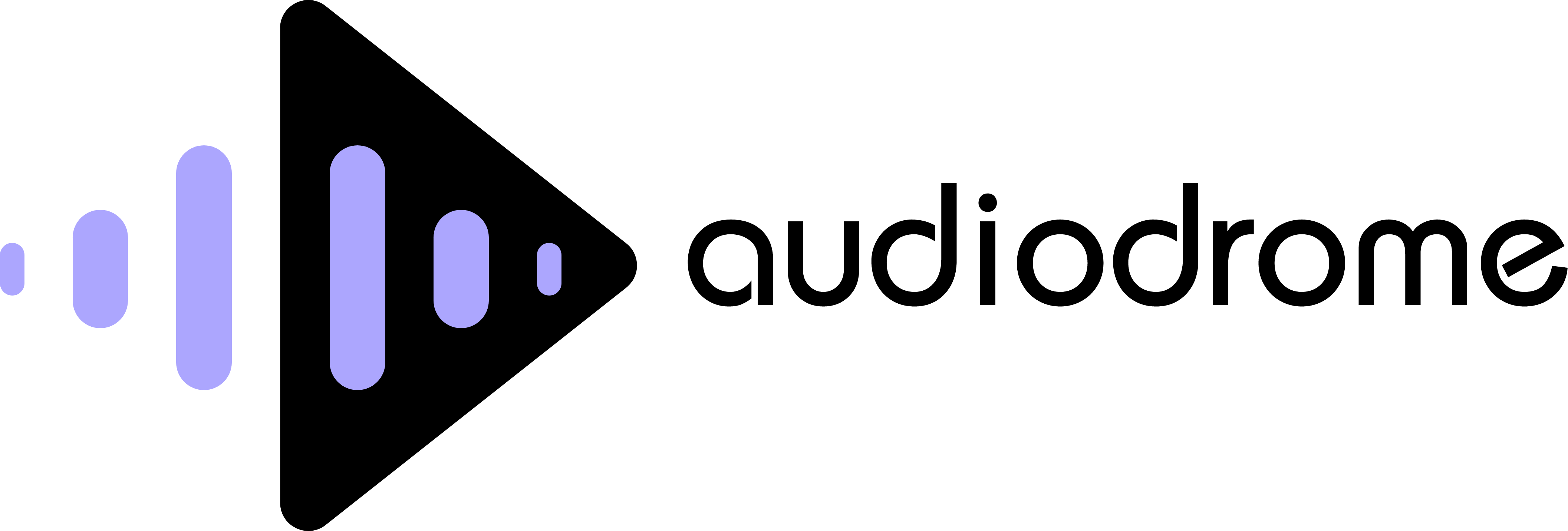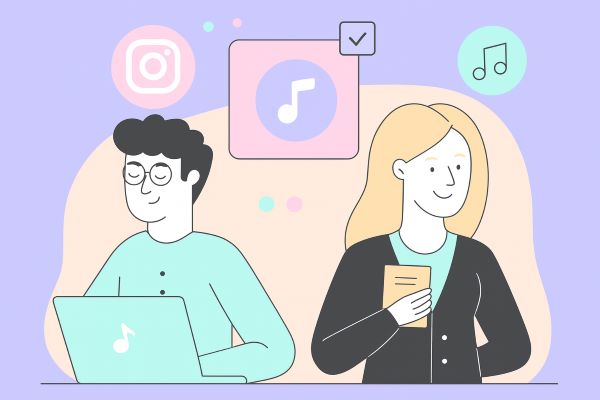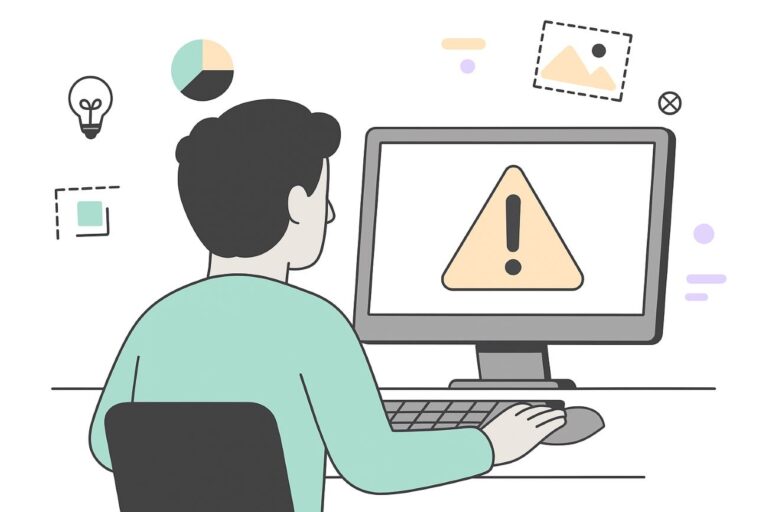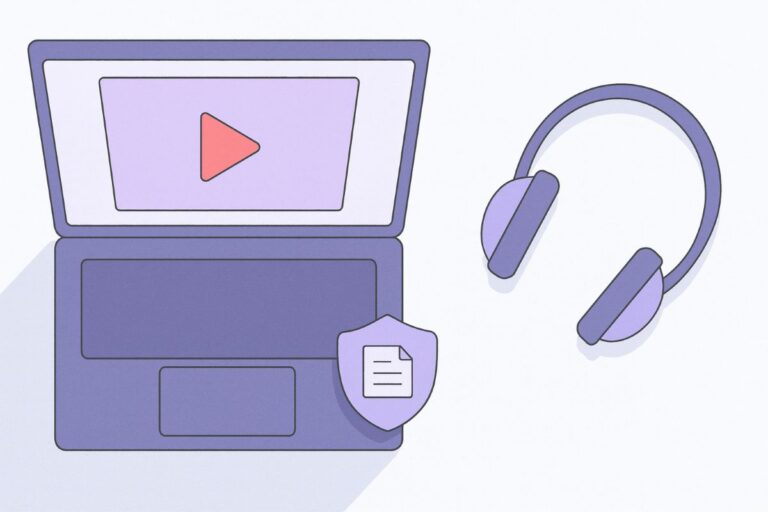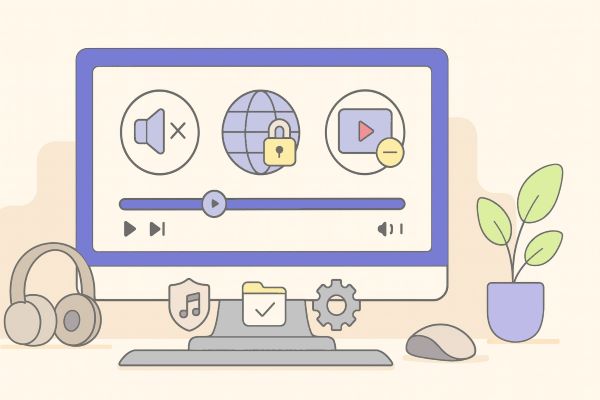Nine Places Creators Look for Safe Music for YouTube
Audiodrome is a royalty-free music platform designed specifically for content creators who need affordable, high-quality background music for videos, podcasts, social media, and commercial projects. Unlike subscription-only services, Audiodrome offers both free tracks and simple one-time licensing with full commercial rights, including DMCA-safe use on YouTube, Instagram, and TikTok. All music is original, professionally produced, and PRO-free, ensuring zero copyright claims. It’s ideal for YouTubers, freelancers, marketers, and anyone looking for budget-friendly audio that’s safe to monetize.
If music choices keep slowing you down, this is your shortcut. See what YouTube’s options cover, when to choose RF, and how to credit CC correctly. Build a simple workflow, store proof, and clear claims quickly. Stay creative while your rights stay rock solid.
YouTube Audio Library
The YouTube Audio Library was created to help creators safely add background tracks or effects to their videos without facing copyright issues.
What it is (scope & where)
The Audio Library is a free resource inside YouTube Studio that offers music and sound effects for creators. You can search, preview, and download tracks based on mood, genre, instrument, or duration. It’s designed to simplify finding copyright-safe audio for YouTube videos.

Each track lists a clear License type showing if it uses the standard Audio Library license or a Creative Commons license that requires attribution. This helps creators instantly understand how they can use the track without reading long legal documents.
Monetization on YouTube
If you’re a member of the YouTube Partner Program, you can monetize videos that use Audio Library tracks. The library was built for creators who want to keep their videos ad-eligible and avoid losing revenue to music claims.

Tracks downloaded from the Audio Library are copyright-safe on YouTube. They should not trigger Content ID claims or strikes, as they are cleared for use across YouTube’s platform under the provided license.
License types
The standard Audio Library license applies to most tracks that say “Attribution not required.” You can use these in any of your YouTube videos without crediting the artist. The license is limited to YouTube, and off-platform commercial use is not granted by YouTube.

Creative Commons tracks, usually labeled “Attribution required,” follow the CC BY license. You can use them commercially and outside YouTube if you credit the artist properly and meet the license’s other terms. To find these tracks, use the License Type filter in the library.
Creator Music (License vs Revenue Share)
Creator Music is a catalog inside YouTube Studio that lets you add popular tracks to your videos with clear monetization rules. Each song offers one of two paths that rightsholders set for that track, so you either buy a license or share your video revenue.
License
You pay an upfront fee at checkout, which can be a small amount or even zero, depending on the track. After purchase, you publish and monetize your video as usual, and you keep the same ad revenue share you would have without using that music.

Licenses appear on a per-track basis and apply to the specific channel that completes the purchase. You manage usage inside YouTube Studio, where you can track which videos include licensed music and confirm that your monetization remains aligned with your standard channel revenue share.
Revenue share
You choose a track with no upfront cost and agree to split the ad revenue on that video with the rightsholders. YouTube calculates the split automatically on eligible videos, so you can use recognizable songs while still earning a portion of monetized views.

This option works best when you want to publish quickly and test performance without paying first. You accept a lower share of that video’s earnings, but you gain access to tracks that might be otherwise too expensive, and you avoid any licensing checkout flow before publishing.
Caveats to flag prominently
Usage terms depend on each track and can change at any time, so you need to read the details on the track page before you confirm. The scope centers on YouTube uploads and monetization on your channel, and it does not automatically cover other uses.

Creator Music tracks cannot be used in a video that a brand paid you to make if that video is primarily promoting that brand or its product. Normal channel monetization is fine, but paid endorsement content is restricted, so confirm the track’s usage rules at checkout.
Third-party RF Libraries
Third-party royalty-free libraries give you direct, predictable music rights for video and social publishing. You choose tracks from an independent catalog, download the files, and keep clear paperwork that proves what you can do with the music across your channels and client projects.
What third-party RF libraries are and how you get them
Independent catalogs sell licenses through subscriptions or single-track purchases. You browse by mood or genre, test previews in your edit, and then download high-quality files that come with a clear license so you can publish confidently on the channels you actually use.

Vendors give you plain-language terms and exportable proof such as invoices, receipts, license PDFs, and license IDs. You store these records with your video files so you can answer questions from platforms, clients, and networks and resolve any future disputes with clear documentation.
Your rights come from a contract with the vendor, not from changing in-platform policies. The license defines what you can do with the music, and that permission follows the project you publish, so you keep reliable coverage even if a platform later updates a help page.
Where can you use the music?
One license often covers YouTube, Instagram, TikTok, Facebook, websites, and apps when the grant names those destinations. You publish the same cut across channels with consistent terms, which keeps policy simple for teams and reduces confusion when you schedule versions for different feeds.

Many plans include Shorts, Stories, Reels, and live or recorded streams when the license lists online video formats. You can cut vertical and long-form edits from the same session and ship both without changing your rights, which helps you repurpose content quickly.
Vendors frequently state worldwide coverage in the license grant with no platform caps when the terms say global rights. That clarity helps you push campaigns across regions without worrying about geoblocks, while your audit trail shows what you bought and when you published.
Licenses usually allow commercial use for ads, promos, and client work when you stay within the defined scope. You can deliver files to clients with proof of rights and keep documentation that lists the project, organization, and permitted placements so everyone understands where the music can appear.

How do they fit your workflow?
Subscriptions let you use many tracks during your active plan across a high volume of uploads. Teams build libraries of favorites, swap alternates during the edit, and move faster because the license already covers multiple projects without a new checkout for each timeline.
Single-track licenses work well for one-off campaigns or a signature theme. You pay once for a specific project and then create cut-downs and versions under that project scope, which limits back-and-forth approvals and gives you a focused budget for a known deliverable.
You can edit, loop, fade, and adapt within the project, and many catalogs include stems, instrumental mixes, and shorter versions. Those assets let you hit beats, trim intros, and fit dialog without awkward cuts, which reduces revision rounds and helps you lock picture sooner.

Cost, ROI, and handling claims
Subscriptions spread cost across many uploads and client deliverables, which lowers your per-video expense as output grows. You can map monthly fees to expected views and campaign value and adjust the plan when your volume changes across seasons or production cycles.
One-time licenses let you keep all ad revenue and creator payouts on cleared projects because you do not share earnings with rightsholders. You pay a known price, publish, and keep future revenue from that video or campaign within the license terms, which simplifies forecasting.

Content ID can still match identical audio when the same recording sits in multiple systems. A claim does not mean you did anything wrong, and you handle it by showing proof that your license covers the specific upload and the music appears as part of your project.

You resolve claims by disputing through the platform and attaching your invoice or license PDF and any allowlisting records. You explain that your use matches the license and reference the track title and license ID, then wait for the claimant to release or respond within the stated window.
Stock sites
Stock sites gather user-submitted photos, videos, music, and sound effects under licenses that the site defines. You download assets for YouTube projects within those rules, knowing coverage depends on the platform’s terms and on whether contributors actually hold the rights they claim to hold.

Pixabay’s license allows free use and modification without attribution for most assets. It also blocks certain uses, including selling the file as a standalone product, implying endorsement by people or brands, and using trademarked logos in commercial settings where permission from the rights owner is required.
You should still read the full license and any item notes before publishing. Check whether the asset needs a model or property release, whether sensitive use restrictions apply, and whether the image or clip includes brands or artwork that could require separate permission in your specific project.

If Content ID flags a YouTube upload that uses a Pixabay track, you resolve it by disputing the claim and attaching your Pixabay License Certificate. This proof confirms you downloaded under the site’s terms, and it shows that “safe” means permitted use, while claims can still occur and get cleared.
In-app libraries
Many mobile editors include a built-in music shelf that looks simple but often limits usage to edits made inside the app. Some tracks restrict commercial uploads, paid placements, or sponsored posts. Terms change by app and by track, so you must read each item’s page before export.

Some apps obtain their music from third parties and reserve the right to swap or remove tracks without notice. That can affect past videos if a vendor withdraws rights. You may also see limits on territory, platforms, number of uses, or whether you can use the audio in ads.

You should expect occasional Content ID claims even when you followed the app’s prompts. In-app catalogs rarely issue a formal license certificate or named contact, which weakens your proof. When claims appear, use YouTube’s dispute flow and gather any receipts, screenshots, and item links.
Document your steps for every upload. Note the track title, the app, the project ID, the export date, and the page that describes usage. Attach those details to your dispute. If claims repeat or stay unresolved, switch to a third-party royalty-free library that gives proper paperwork.
Some creation apps update their terms to grant themselves broad rights over user content for service operation and promotion. Review those terms before you rely on in-app audio for commercial uploads. Favor sources that state clear commercial permissions and provide a downloadable license you can keep.
Stock apps
Some stock apps aggregate third-party catalogs through an API and do not issue track-level license documents. That gap makes clearing claims harder and creates uncertainty about commercial or client permissions because you cannot show a contract for a specific track when a platform or brand asks for proof.

Prefer sources that state YouTube and monetization rights in plain language at the track level. Choose vendors that let you download a certificate, invoice, or receipt that names the track and your account. You can attach that file in YouTube’s dispute form to show authorized use and resolve claims faster.
Keep solid records for every download and upload. Save the order receipt, track page URL, file name, project ID, and publish date. If a claim appears, include those details in your dispute. Clear documentation helps the claimant verify your rights and removes guesswork during the review.
Here is a quick example that shows the risk. When I worked as an affiliate and launch manager, a vendor pitched a stock app for a partner launch. I opened the music tab and saw a mainstream track from Jane’s Addiction. That was an instant red flag, and I declined the launch.
Public domain (PD)
Public domain in music splits into two parts. The composition can be free to use while a specific sound recording of that composition still has protection. You must check both layers each time, since one can be open while the other still requires permission or licensing.

In the European Union, protection for performers and phonogram producers on sound recordings extends to 70 years. The clock and calculation can vary by the date of publication and the way a release was issued, so you need to review the timeline for the exact recording you plan to use.
In the United States, pre-1972 sound recordings moved under federal law through the Music Modernization Act. Terms depend on when the recording was fixed or published, with many protected up to 95 years from publication, and a schedule specifies different end dates for different eras.

The practical bottom line is simple. Public domain is safest only when both the composition and the recording are public domain in every market where you will publish. If either layer remains protected, you can still face claims, even when the underlying song feels old and widely known.
Creative Commons repositories (outside YouTube’s AL)
Free Music Archive and ccMixter host community-curated catalogs of Creative Commons music for creators. You can search by genre, mood, or tempo, preview full tracks, and download files for editing, which helps when you need budget-friendly music with clear license terms for YouTube and social.
.jpg)
Permission depends on the exact CC license listed on the track. CC BY allows use with attribution, CC BY SA requires sharing remixes under the same license, CC BY NC prohibits commercial use, and CC BY ND prohibits edits, so align your project and monetization plans with those rules.
Credit the artist in the description using a simple format that includes track title, artist name, license name and version with a link, and the source page. Note any changes such as trims or loops, and keep a dated screenshot of the license in your production records.
Direct artist licensing and commissions
A direct license means you ask an independent artist for permission to sync a specific song to your video. Buying a download on a store does not grant sync rights, so you need written approval that names your channel, project, and where the video will appear.

Request a simple license that covers YouTube monetization, other platforms you plan to use, worldwide territory, and perpetual duration. Ask how the artist handles Content ID, whether they can allowlist your channel, and if any performance or publishing splits affect your revenue or future uses.
Commissions give you a custom track made for your project, and the contract controls who owns the result. If it states work made for hire and both sides sign before creation, you own the recording and composition, which lets you publish and monetize without future approvals.
Spell out scope, deadlines, revision rounds, stems, and delivery formats so the music fits your edit. Confirm credits, moral rights waivers where needed, exclusivity if you require it, and that the composer will not register the track in a way that conflicts with your Content ID plans.
Ship Faster With Rights You Can Prove
Great videos need clear, portable music rights. Match the source to the job, save receipts and license files, and keep alternates ready. When a claim pops up, respond with proof and move on. Your goal is steady publishing, consistent sound, and zero rights surprises.

Audiodrome was created by professionals with deep roots in video marketing, product launches, and music production. After years of dealing with confusing licenses, inconsistent music quality, and copyright issues, we set out to build a platform that creators could actually trust.
Every piece of content we publish is based on real-world experience, industry insights, and a commitment to helping creators make smart, confident decisions about music licensing.

